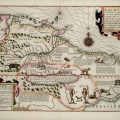Saint Lawrence is famous for having been sentenced to die at the stake. More precisely, on a grill, by order of a Roman prefect, at the beginning of the 3rd century, just four days after the martyrdom of Pope Sixtus II. He is one of the most popular saints in Christianity: not only an astronomical phenomenon and an imposing palace in Madrid bear his name, but also one of the seven essential basilicas in Rome is dedicated to his memory –not to mention a famous Argentinean soccer team.
Lorenzo was from the Roman Hispania –that is, he was a Spaniard. Tradition has it that he was born in Huesca, where his family was from. For unknown reasons, he ended up living in Rome, being in the service of Pope Sixtus II as archdeacon –that is, he administered the Church’s money, and acted as archivist and librarian. He was also the one who distributed alms to the poor –this being one of the reasons why the people of Rome held him in high esteem.
Some historians say that when Emperor Valerian, in 258, decreed a persecution of Christians, he did so with the intention of stripping them of their wealth –which, apparently, was already attractive enough.
Both the Depositio Martyrum of 354 and the fifth century Jerome Martyrology tell that the then prefect of Rome ordered Lawrence, being the papal administrator, to hand over the riches of the Church. Lawrence asked for three days to collect them. On the third day, he filled the prefect’s palace with the poor of the city, arguing that these were the true treasures of the Church.
The authorities did not share his sense of humor.
A 17th century apocryphal text, supposedly based on the writings of a 6th century monk named Donatus, claims that Lorenzo managed to get the Holy Grail out of Rome through a friend, and had it hidden among his relatives in Huesca, before being sentenced to death. It makes sense, if we consider that Lorenzo was the papal administrator, and that the grail was kept in Rome since Peter took it with him to the eternal city. The Grail, thus, ended up being family property.
The Christians of the time must have been quite aware of the importance of the relic: an early Hispano-Roman church was built on the site, followed by a Visigothic one. In the year 553, the then bishop of Huesca, Vivencio, decided to transfer the relic to the city, to the church of San Pedro El Viejo.
But less than 200 years later, the Grail disappeared. It was rushed out of the city by Christians fleeing the Muslim conquest of the Peninsula. It was kept hidden yet again, far beyond the mountains. Tradition claims it toured around Spain for centuries. Its itinerary is now part of the famed pilgrimage route of the Holy Grail, the Camino Del Santo Grial.





